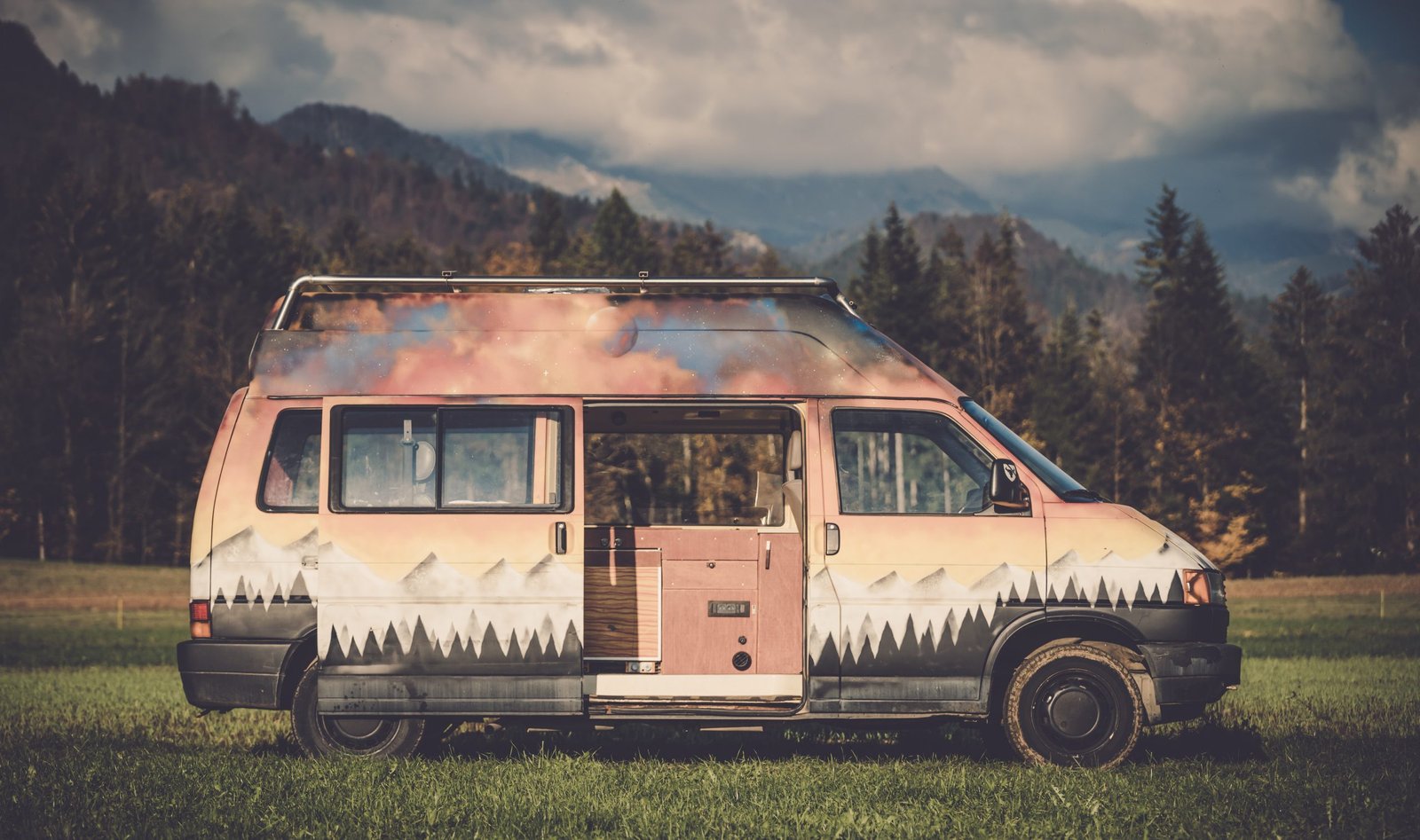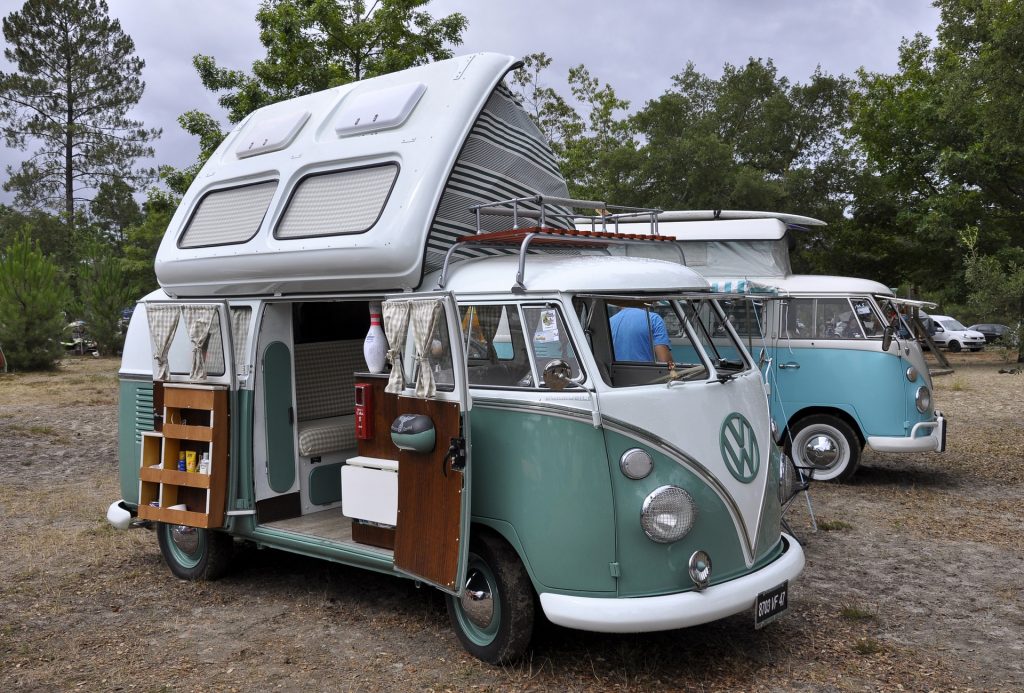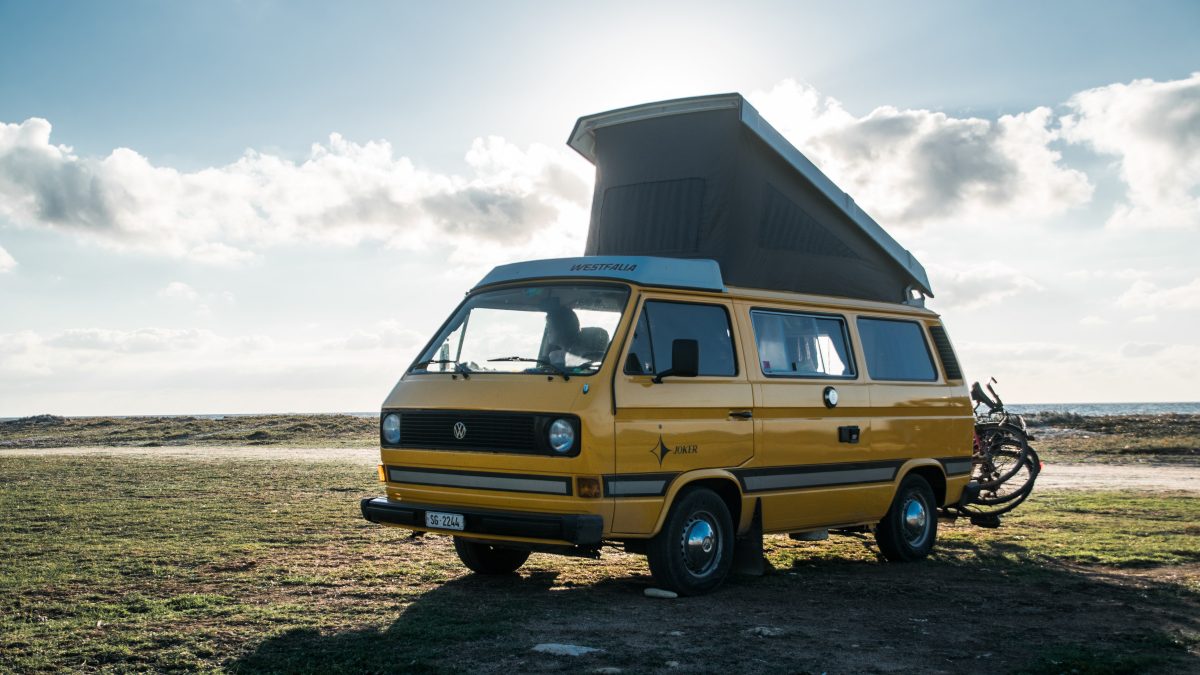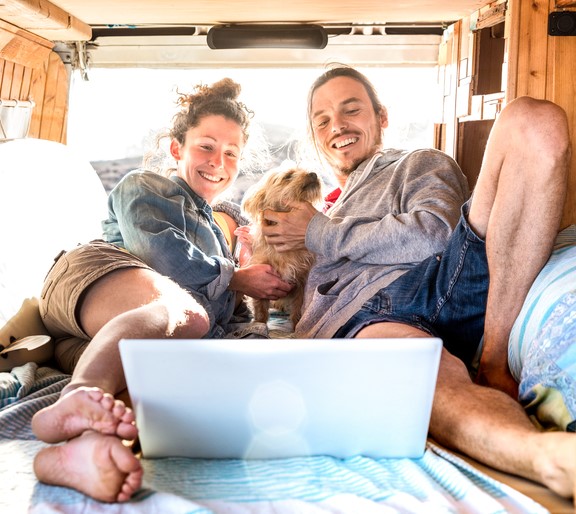
15 Genius Campervan Storage Ideas for Your Next Adventure
June 11, 2021
13 Ingenious Campervan Tables
July 16, 2021How much does it cost to convert a VW van into a camper?
If you’ve ended up here in a quest to figure out how much it costs to convert a VW van into a camper, you’re not alone! It’s a popular question but one which is incredibly difficult to answer. Technically, you could strip out some seats, pop in a mattress, and call it job done on a shoe string. In reality, we know that’s not what you’re after. So, let’s dive in and try and explain what the costs are and how they vary, so that you can figure out how much your particular project might cost.

DIY vs. professional conversion
Before we get stuck into the individual elements, let’s just quickly flag up an issue which drastically affects costs: whether you’re doing the conversion yourself or paying someone else to do it.
This isn’t actually as clear cut as you may think. Yes, you’ll save on labour costs by doing it yourself. However, professionals can sometimes make savings that you can’t, simply because they already have the tools, can share resources, and know what works best. There is also a huge range in professional costs depending on whether you are opting for a unique design or a standardised fit-out. There are pros and cons to a self build campervan; familiarise yourself with the process before embarking on the venture.
Your base vehicle
For a VW van conversion into a camper, most people consider the Transporter as the best van for a camper conversion. This is usually your single largest cost and already it will vary from conversion to conversion. With a bit of looking and going for an older vehicle requiring some work, you can get a base van for as little as £1000.
In reality, this may end up costing you more in terms of mechanical work and maintenance. Generally speaking, we advise that you opt for the most reliable and newest van you can afford for the base. This is particularly important if you aren’t mechanically minded. Not only do you not want to waste time with the van in the garage having work done, you don’t want to be constantly dipping your hand into your pocket down the line.
A good ballpark for your initial van cost should, ideally, be in the region of £8000 – £15,000.
Fixtures and fittings
With your base vehicle chosen, fixtures and fittings is where your next major expenses ramp up. Again, this is hugely variable depending on what you want.
As we say, you could take a hollow van, add a mattress and call it a camper, but really, that’s not going to make for an awesome van life. However, it’s important to remember that if you’re going down the DIY route, you don’t have to do it all at once! You can spread the costs by getting the van functional and then gradually improve it as you go.
So, what are the important elements to consider?
· Where will you sleep?
Let’s face it; the comfort of your sleep zone is going to make the difference between hating van life and loving it. Spend the most you can afford for a decent comfy bed. You can thank us later.
· Where will you sit?
In your base vehicle, what’s the current seating situation and can this be used and adapted in the conversion? The seats need to be both safe and comfortable. Realistically, the seats may well set you back in the region of £2500, if you need to start from scratch.
· How will you keep food cold?
Choosing the best campervan fridge is a BIG consideration. Not only is it your means of keeping food cool, it means you need to consider power too. Built-in fridges typically cost in the region of £300-£1000. In the short term you could use a plug-in cool box for a fraction of the cost.
· How will you cook?
Close on the tails of refrigeration is cooking. You can get built-in LPG ovens. The pro is that you can bake a cake or roast that self-caught salmon from this morning. The downside is that they are expensive and take up lots of valuable room in the van. You can keep costs and space down by opting for a hob burner. You could even then buy a stove top oven to use in conjunction with this if you really do want an oven itself.
Beyond the actual means of heating food, you also need to think about preparation and storage – in short, you need a van kitchen. The kitchen fit-out element is where the prices really enter the territory of ‘piece of string’ – you really can spend as much as you want to! An unseen cost here is weight. Whatever weight you add to your van will cost more in terms of fuel and wear and tear, so take care.
· How will you power things?
So this all brings us back to electricity. Whatever gadgets and gizmos you go for (and with your lighting), you’re probably going to need a decent electrical system. We recommend a 12v system. Many will pay for an auto-electrician to do this element of the conversion, even if they are going DIY with the rest. You don’t want to scrimp on electrics as that leads to van fires and that would be dream over.
Whilst you’re considering power, think about how often you’ll be off-grid and how this will work. Solar panels and decent batteries add to the costs, but they are a must-have if you’re likely to be doing more than rocking up at electric pitches.
· How will you circulate air?
Remember, your VW van wasn’t actually designed to have people, food and pets in it for hours at a time. It’s really important, at the conversion stage, to factor in how you will prevent and mitigate damp and condensation. If you don’t factor it in now it will become a nasty headache and cost down the line. You’ll definitely need a fan or two and vents are also needed. Whilst you’re at it, don’t forget about insulation and sound-proofing.
· How will you do your ablutions?
Not everyone opts to have a toilet and/or shower combo in their van, but for many it is a must-have. This can add a lot to overall costs. Be sure that you want to give over valuable space to this. The most versatile option, and the cheapest, is to have a portable toilet and a pop-up shower.
· How will you make it feel like home?
Now it’s down to prettifying your camper. Here the costs can be nothing upwards! Soft furnishings can help to cheaply transform the camper into an inviting homely space. Flooring needs to be factored in here too.
Tools
We’ve mentioned this already, but something that many forget to factor into their conversion costs is the cost of the tools they will need to do the DIY camper conversion. If you aren’t already a wannabe joiner then the chances are that you’re going to have to shell out to buy and/or hire the tools you need. These costs can really mount up.
Alongside the tools, consider where you’ll do the work. Do you need to rent a workshop?
Security
Right, we’re a campervan insurance comparison site, so we’re going to have a word or two to say about security! We see, all too often, the dire consequences of lax security! You’ve put all this love, effort and expense into the conversion and then the van isn’t adequately secured. It’s heart-breaking.
We recommend a two-pronged approach to campervan security following your conversion: security devices (such as immobilisers, fire extinguishers and locks), and adequate insurance that factors in the real costs of your conversion and therefore the true value of the campervan. We talk more about VW T5 campervan insurance here.
Reclassification
Another part of the conversion often forgotten is the reclassification costs. Reclassification itself technically doesn’t cost anything, bar the stamp to send off the forms. However, in reality, to meet the conditions of reclassification, you may find yourself encountering additional costs you haven’t factored in above.
Any other costs?
Of course there are countless other costs, if you want them! The biggest when it comes to VW van to camper conversions is creating a raised or pop top roof. Expect to spend in the region of £4000+ for this alone.
So, all in all, how much does it cost to convert a VW van into a camper?
As you can see from the above list of what’s needed, it’s really difficult to put an exact figure on the van conversion cost. A good ballpark figure is £15,000 – £20,000 but do remember – you can make decisions which affect this upwards or downwards, according to need.
If you plan to buy a campervan in the near future or already own one, then you will need to get campervan insurance before you can drive it. You can compare camper insurance quotes from multiple providers by filling out quick and easy form. Let us help you find the best deal for your needs.




